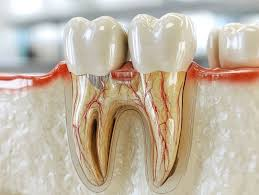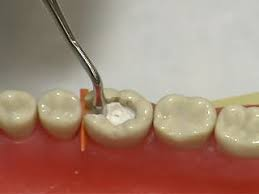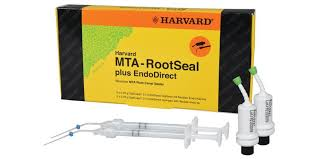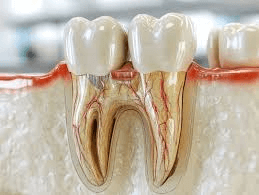When performing a root canal procedure, the dentist will always need to use a variety of obturation materials in endodontics that will allow us to get the perfect results. There are different materials for each step of the treatment process, from the root canal that cleans the residue inside the tooth, to the filling that closes the root canal, to the root canal that closes the surgical incision after the procedure is complete. Choosing the right dental obturation materials will help ensure a pleasant experience for the patient as well as a more seamless outcome for the procedure. Next I will introduce you to each of the common dental obturation materials.

What is Dental Obturation Materials
Dental obturation materials are used during root canal treatment by dentists to fill and seal the root canals after removing the patient’s necrotic pulp. They keep the root canals sealed to prevent reinfection, block bacterial invasion and promote surgical wound healing. Aidite is a leading supplier and manufacturer of dental materials and equipment, providing you with a root canal materials list to improve oral care and help everyone have a healthy and beautiful smile.

5 Common Dental Obturation Materials
As a dental professional or a patient wanting to undergo a root canal procedure and wanting to learn about the more common dental obturation materials, here are five dental obturations that I recommend for you to use in a root canal procedure so that your teeth will be at the top of their game again.
1.Gutta-Percha
Gutta-percha is a natural latex compound obtained from the sap of the gutta-percha tree. For decades, it has been the gold standard for root canal fillings. Gutta-percha is a natural thermoplastic dental obturation material derived from the latex of trees native to Southeast Asia, and its unique properties have made it a great companion for root canal procedures.
Advantages
- Human adaptability: the dental adhesive adapts well to the patient’s body and reduces the risk of adverse reactions to root canal treatment.
- Sealing: It can be used with a suitable sealant to provide a good sealing environment for the wound.
- Radiopacity: it is easily visible on x-ray and facilitates the evaluation of root canal treatment.
- Stability: it can keep its shape and is not easy to change.
Disadvantages
- Lack of antimicrobial properties: gutta-percha does not have inherent antibacterial and antimicrobial properties.
- Limited adhesion: a sealer is required to completely seal the liquid.
2. Resin-Based Sealants
Resin-based sealants are very versatile due to their excellent sealing and antimicrobial properties. These sealers consist of a resin monomer, a dental obturation material and an additive, and are one of the most important materials for root canal treatment.
Advantages
- Adhesion: Resin-based sealants bond well to dentin and cementum, providing excellent adhesion.
- Antimicrobial properties: Resin-based sealants contain substances with antimicrobial agents that reduce the risk of reinfection.
- Stable curability: Resin-based sealants shrink minimally during curing, maintaining the integrity of the dental filling material.
Disadvantages
- Sensitivity: Using and mixing resin sealants maintains optimal results and keeps the material sensitive.
- Toxic: If not properly polymerized, it may have cytotoxic effects on the periapical tissues.
3. Bioceramic Sealer
Bioceramic sealer is a dental obturation material used for root canal treatment. It is composed of calcium silicate, calcium phosphate and zirconium oxide. It is mainly used to fill the root canal system, prevent bacterial infection and promote the healing of surgical wounds in patients.
Advantages
- Good biocompatibility: Compatible with gingival essence and surrounding human tissues, reducing inflammatory reactions in patients.
- Biological activity: Able to form chemical reactions with dentin to promote wound healing.
- Antibacterial property: During the curing process, it can inhibit bacterial growth.
- Sealing property: This material can effectively prevent bacterial and liquid leakage and fill the gaps in the root canal.
Disadvantages
- Relatively long curing time: Compared with resin sealers, bioceramic sealers have a longer curing time, which requires maintaining closed isolation to prevent bacterial contamination.
- Cost: Bioceramic sealers are usually more expensive than traditional gutta-percha and resin sealers.
4.Mineral Trioxide Aggregate (MTA)

MTA is a diverse dental obturation material that is widely used in root canal treatment and is also a material frequently used by dentists. It is composed of hydraulic materials such as tricalcium silicate, dicalcium silicate, tricalcium aluminate and bismuth oxide.
Advantages
- Biological compatibility: MTA has good compatibility and tolerance with periapical tissues, which can promote good wound healing and patient comfort.
- Good sealing ability: When MTA condenses in the root canal system, it can form a good sealing effect to help you seal without gaps.
- Biological activity: Similar to the characteristics of bioceramic sealers, MTA can stimulate the formation of hydroxyapatite and promote the recovery ability of the periapical area.
Disadvantages
- Long curing time: MTA has a long curing time, which may prolong the root canal treatment process, which is not conducive to the progress of the next treatment process for patients and dentists.
- Easy to discolor: The longer the time, the more likely MTA will cause tooth discoloration, affecting the overall beauty and practicality of the patient’s teeth.
5.Zinc Oxide Eugenol
Zinc Oxide Eugenol is mainly used for temporary filling, padding and temporary bonding of tooth wounds in root canal treatment. This material has been used in root canal treatment for many years and is also one of the important dental obturation materials.
Advantages
- Analgesia and soothing: Eugenol has mild analgesic and antibacterial properties, and has analgesic and soothing effects on inflamed pulp.
- Easy to operate: The material solidifies quickly and can be operated and placed in the root canal system relatively simply.
- High cost performance: Compared with other dental obturation materials, it is more affordable and cheaper, with lower cost and higher cost performance.
Disadvantages
- Solubility: It is easier to dissolve in a humid environment, and its sealing ability is also relatively weak.
- Poor compatibility: It cannot be well combined with dentin, and its compatibility is relatively poor, so it needs to be reinforced with core reinforcement materials.
Explore the Future Trends of Dental Obturation Materials
With the continuous development of digital and intelligent medical care, dental obturation materials are moving in the following directions:
Intelligent Materials
Future dental obturation materials will tend to be intelligent and can adjust their performance according to changes in the oral environment, thereby extending the service life of the restoration and reducing maintenance costs.
Biologically Active Materials
Dental professionals are already creating new bioactive dental obturation materials that can not only seal defects, but also promote the regeneration of dentin, improve the repair effect of tooth structure, and improve your medical work efficiency.
Personalized Customization
With the development of 3D printing and digital diagnosis and treatment technology, dental obturation materials in the future can be customized to meet the creativity of patients and dentists. Doctors can customize dental filling materials and restorations according to the specific conditions of patients to achieve efficient diagnosis and treatment.
FAQ
1.Which is cheaper, a root canal or implant?
Of course, root canal treatment is cheaper and preserves your original teeth, while dental implant surgery is more complicated and more expensive.
2.What material is used for primary root canal filling?
Zinc oxide-eugenol cement (ZOE) is used to help you with the treatment. It is cheap and easy to use.
Conclusion
Dental obturation materials play a key role in root canal treatment. This article introduces what dental obturation materials are, what types of dental filling materials there are, and introduces its advantages and disadvantages. It also explores the future development trend of dental filling materials and the direction in which they should develop. If you don’t understand dental materials yet, you can choose Aidite to help you develop a comprehensive dental solution to help you solve your problems and improve your productivity.




